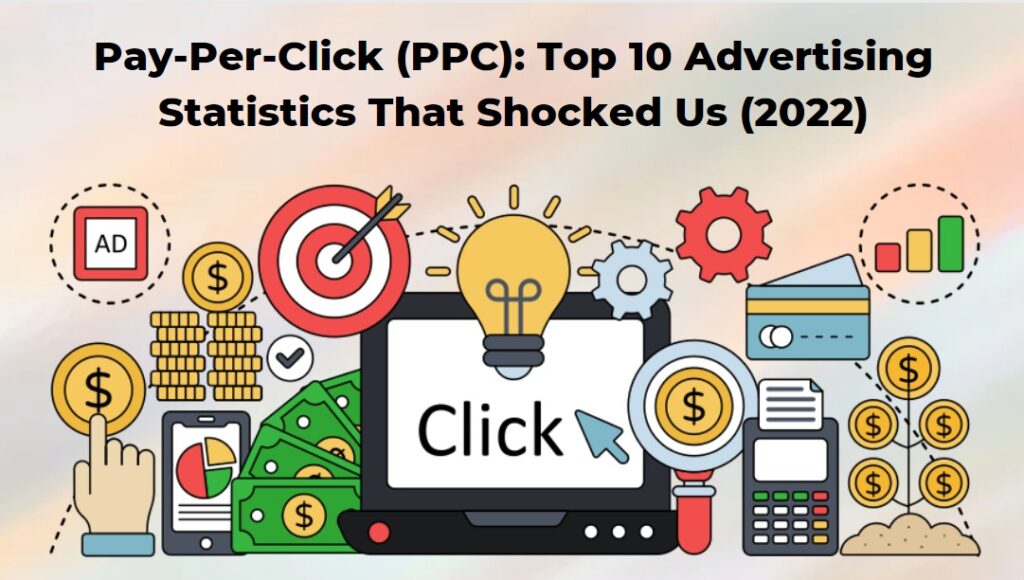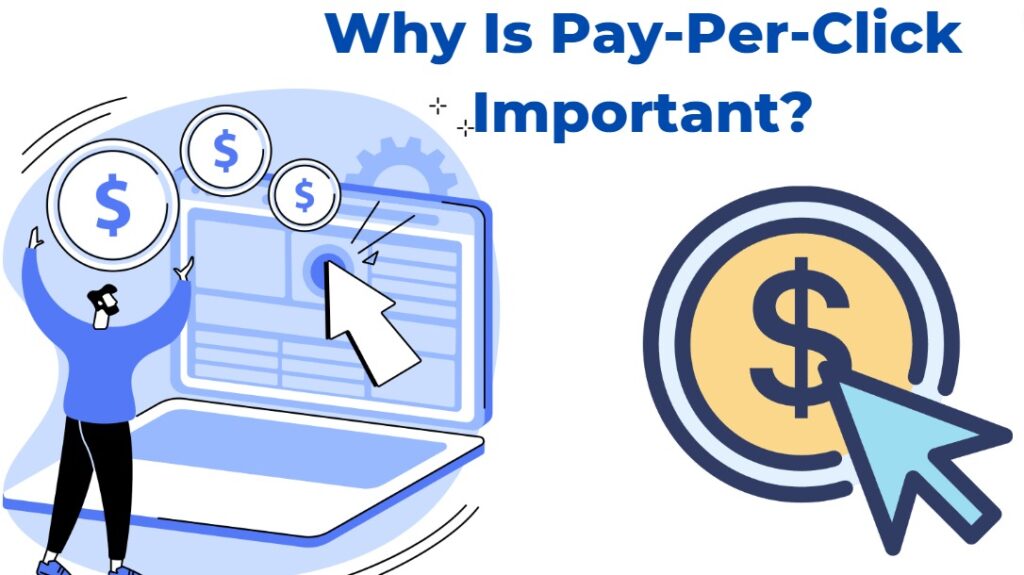
Ads are a terrible thing from the user’s perspective. They irritate you by appearing while browsing, listening to music, or even using your phone to play games. But even though we occasionally deal with this pointless spam, ads have improved recently. According to PPC statistics, the most successful advertisements don’t rudely interrupt you to sell you something you don’t need. Those that emerge when you’re looking for them are the ones that make money. PPC advertising thrives when looking for a specific product or exploring relevant websites. For a good reason, PPC has established itself as a digital advertising pillar. It’s the most effective way to attract new customers and boost revenue. Therefore, in this article, we will let you know the Pay-Per-Click (PPC) Advertising Statistics that will aid you in the future.
What Is PPC (Pay-per-click)?
Pay-Per-Click is a trending online marketing method in which advertisers pay a fee each time one of their ads is clicked. Simply put, you only pay when your ad is clicked on. It is merely a means of ‘buying’ visits to your website in addition to boosting organic internet traffic. Businesses can reach their desired customers using this approach without spending any money. The PPC sector is expanding, and enterprises and service providers appear to be making money from it. Search engine marketing enables marketers to pay for ad placement in a search engine’s sponsored links. It is one of the most hyped types of PPC. This works when customers type in a keyword associated with their product or service.

Why Is Pay-Per-Click Important?
Pay-per-click advertising is one of the most known techniques of digital marketing. However, for companies that haven’t tried it, the first question is undoubted, “why is PPC important?”
There is no doubt that PPC is important.
However, before developing a PPC strategy or investing in a full-fledged ad campaign, it’s critical to understand why it is essential for online business success. Read below to know why!
- You can control a sizable number of business and marketing objectives with PPC. These objectives range from thought management and high-profile brand exposure to a suitable track submission or e-business transaction. PPC is also essential for connecting website traffic operators with end objectives.
- Pay-per-click advertising offers a far higher level of control than conventional paid advertising tactics because it is based on budget. One prominent feature of PPC advertising is that businesses have extremely fine-grained control over how their spending is allocated. Moreover, you pay for clicks on popular paid ad formats like search engine PPC! There is no entrance fee and no set minimum for advertising expenditures.
- One key benefit of PPC digital advertising is that it is simple to track and measure. You will notice obvious performance detachments such as clicks, impressions, and conversions.
- It is simple to set up and start using as opposed to slow-working SEO and content-focused marketing techniques.
- The significance of PPC depends on a company’s capacity to accurately read its data, modify its ad campaigns, wait for new data to arrive, and then assess the success of its changes. This marketing area is incredibly data-rich and provides marketers with highly fine-grained data and ad management.

Top 10 Pay-Per-Click (PPC) Advertising Statistics
-
PPC is one of the top three on-page conversion generators
The percentage of website visitors who provide contact information or complete transactions is called on-page conversions. Of course, every company wants to increase on-site conversions. Therefore, PPC is one of the top three producers for this measure (17%), along with email marketing (18%) and on-page website conversion (24%).
-
PPC Automation
Marketing automation is quickly catching up to the PPC industry and will become a significant phenomenon by 2022. This is due to the continued rapid growth of the global automation industry, particularly in the process automation sector. The market for process automation has grown to 83.2% and is still growing. Although PPC automation isn’t precisely a new concept, it will become more significant in 2022.
Most marketers have concluded that one of the most acceptable methods to invest in advertising is through social ads. This is demonstrated by the fact that, up from 60% in 2020, 83% of marketers will use social media in 2021.
According to the pay-per-click statistics, between 2020 and 2021, 65% more marketers used search engine marketing, up from 51%.
-
Pay-per-click advertising generates 50% more conversions than organic advertising when it comes to traffic
When comparing PPC and SEO statistics, it appears that PPC is far more successful in generating conversions. PPC advertising generates 50% more traffic and conversions than organic keyword advertising, according to Moz statistics from 2017.
-
97% of customers use the internet to find local companies
97% of consumers use the internet to look for local businesses, with 12% doing so daily. These statistics demonstrate how much we rely on the internet for consumer requirements. It also illustrates how valuable PPC advertisements can be if you successfully reach your target market and build solid PPC traffic. A strategically placed paid advertising could direct them to you because practically everyone uses the internet to find nearby companies.
-
92% of online paid ads go unnoticed
A significant issue in the PPC sector is ad blindness. This phrase describes a phenomenon whereby people disregard online advertisements, whether on purpose or not. According to Koll’s statistics, most promotions are affected by ad blindness.
-
PPC ads can raise brand recognition by 80%
It might be challenging and take months or even years to rank on the first page of any search engine for a specific organic term. However, Paid advertisements are a far faster approach to reaching an audience. PPC advertising statistics that support this claim demonstrate that these advertisements boost brand awareness by 80%.
-
75% of users visit ads to find relevant information
The majority of internet users who click on ads claim to do so to get the content they’re looking for more conveniently. According to statistics from pay-per-click advertising, they believe that adverts effectively deliver the information they are looking for.
-
43% of brand-new client purchases are a result of YouTube ads
Advertising your goods or services on YouTube is wise, given that nearly half of all new customers make purchases due to a YouTube ad. Furthermore, according to YouTube statistics, 80% of users use this site to watch videos that can influence their purchasing decisions.
-
PPC takes about three weeks to learn, whereas SEO might take up to three months
You’ll need to spend a fair amount of time to advance with whatever you decide. You can’t just submit PPC ads and expect to see results right away with no preparation. Ad optimization that uses a low CPC and achieves a high CTR is an art form in and of itself.
Conclusion
I’ve covered all the details you need about the PPC stats that will be useful to you in the future. Additionally, we uncovered a vast array of PPC statistics and determined that they are a good and successful method of reaching customers. When PPC campaigns are correctly executed, conversion rates can be relatively high. These, in turn, can give your company the fresh customers it needs to expand.
